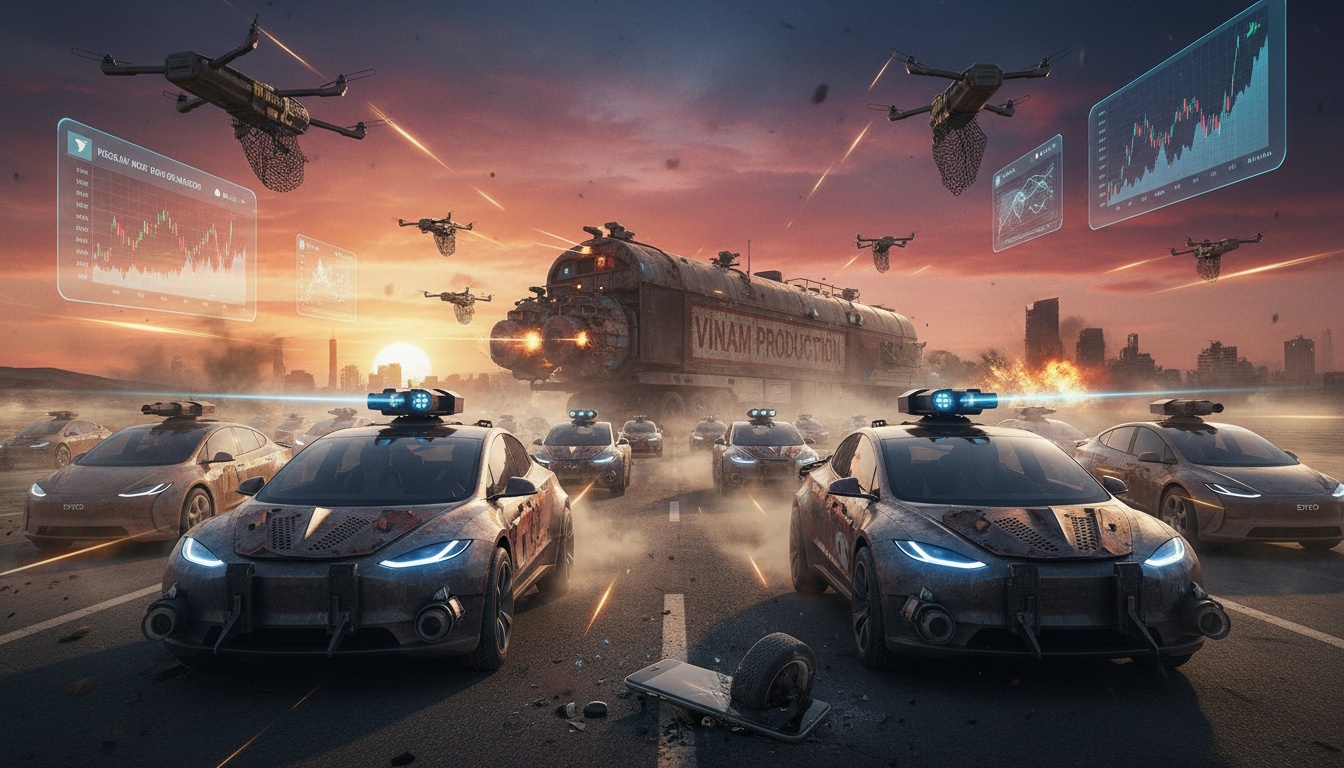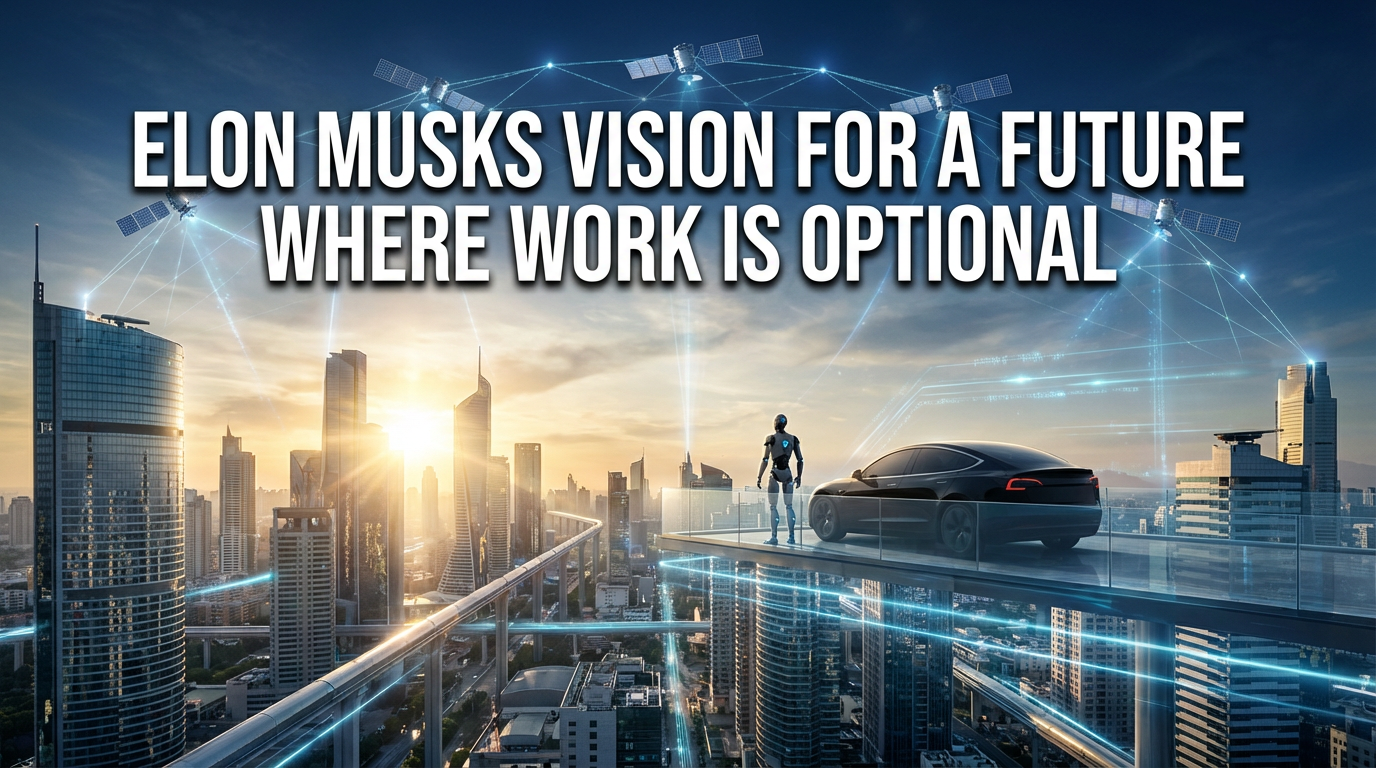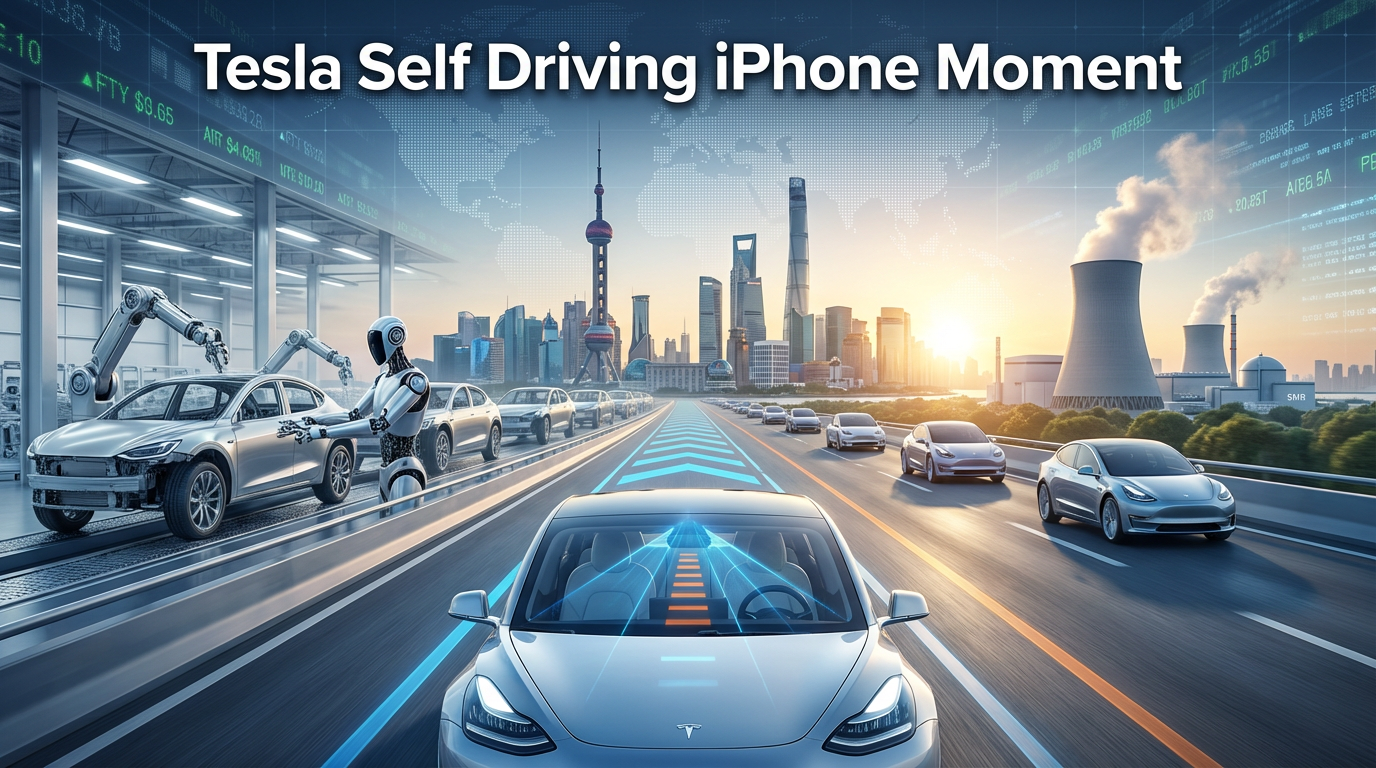● AI War, Tesla ‘Mad Max’ vs Apple BYD Robot Invasion
Apple·BYD Robot Entry, Tesla ‘Mad Max’ Unveiled…AI Showdown Begins: The Essence and Winning Conditions of This Round
Key Points to Check in This Article
Apple and BYD’s plans for robot production, the technical significance of Tesla FSD’s ‘Mad Max’ mode, and the governance risk of the Delaware Supreme Court compensation lawsuit are all summarized in one go.
We also cover the less-discussed cost structure of ‘physical AI’, the data flywheel, the geopolitical implications of production in Vietnam, and provide a separate checklist from an investment perspective.
Key points that can be immediately applied to investment strategies are selected, connecting global economic outlook, stock market volatility, inflation, interest rates, and a strong dollar.
News Briefing: 4 Factors Moving the Market Today
1) Apple·BYD Robot Entry Rumors
According to Bloomberg, it is suggested that Apple is pursuing the production of smart home robots and HomePod-style smart displays in Vietnam, with BYD possibly handling assembly, testing, and packaging.
The launch is discussed for 2026–2027, and there are speculations that a “desk-type motor-driven robot” could be included in the initial product lineup.
The key point is whether Apple’s traditional strategy of integrating hardware first and adding AI later will be repeated in robotics.
2) Tesla FSD ‘Mad Max’ Mode Unveiled
The mode offers an even higher speed offset, more frequent lane changes, and bolder merge/cut-in decisions than previous aggressive profiles.
Feedback from US testers converges on “natural, bold yet smooth behavior in congested traffic”.
This is interpreted as a signal of shifting towards behavior planning similar to that of a human driver in actual traffic flow.
3) Divergent Wall Street Evaluations of Tesla
In new coverage, some say “Tesla is the first AI platform realized in the physical world” and highly value its long-term growth potential.
Meanwhile, others point to the high valuation (relative to P/E) and a disconnect with fundamentals.
The market premium could be re-evaluated depending on the speed at which robotaxi and Optimus begin generating revenue.
4) Musk’s Compensation Lawsuit Moves to the Delaware Supreme Court
The 2018 compensation plan was re-approved this year, but its legal effect is pending final court judgment.
The issue is how far the court will respect the “non-coercive shareholder decision based on sufficient information”.
Depending on the outcome, significant effects on US corporate governance, Tesla’s risk premium, and even trends in the choice of overseas legal systems in the global economic outlook are expected.
Analysis: Tesla vs. Apple·BYD, Fundamental Differences in the ‘Physical AI’ Stack
– Data Flywheel
Tesla: Possesses a massive data engine that periodically updates its models by combining road-driving data (video + intervention) with simulations.
Apple·BYD: The initial home/desk robot, being less complex, requires more time to accumulate large-scale behavioral data, and relying on external licenses for its in-house generative AI model capabilities may constrain margins and product differentiation.
– On-Device Computing vs. Cloud Dependency
Tesla: Adopts an in-vehicle chip and a new inference architecture strategy to reduce latency and costs.
Apple: Although its A/M series chips and edge ML optimization are strengths, latency in physical interactions (vision, tactile, motor control) in robots directly impacts safety.
Dependency on the cloud could accumulate monthly OPEX and deteriorate the profitability of home robots.
– Hardware and Actuation Quality
Tesla: Optimus benefits from automotive-level safety standards and rapid cost reductions enabled by low-cost electric motors, gearboxes, and integrated battery technology.
Apple·BYD: While BYD’s vertical integration in motors and batteries is a strength, tuning for human-environment interaction (HRI) safety will require time.
– Safety and Liability (Risk/Insurance)
Tesla: Has accumulated extensive experience with automotive safety standards and OTA safety cases.
Apple: Faces new safety and liability risks at home, including issues involving children, pets, and personal data.
EU and US regulations on robots and AI remain fluid, and early products are likely to be released with limited functionality.
– Supply Chain and Geopolitics
Tesla: Is strengthening risk mitigation through multi-country production.
Apple·BYD: Production in Vietnam aligns with a ‘China+1’ strategy and is beneficial for managing cost and exchange rate risks in a strong dollar environment, though high-precision robot assembly will require a ramp-up period for quality assurance.
– Unit Economics
Tesla: Has a clear path to ARPU generation through FSD subscriptions, robotaxi services, and Optimus B2B pilot programs.
Apple: Initially, home robots will likely bring premium hardware sales, with consumer demand for subscription-based AI functions being sensitive to inflation and interest rate environments.
Why ‘Mad Max’ is a Tipping Point
– Three Technical Points
1) Gap Acceptance Upgrade: Implements human-like gap judgement and acceleration timing in merge and cut-in situations.
2) Social Compliance: Enhances micro-level negotiation ability (bottlenecks, intersections) that does not disrupt traffic flow.
3) Policy Gradient: Fine-tunes the risk-efficiency trade-off based on situations, increasing the perceived naturalness in urban driving.
– Key KPIs to Watch
Intervention frequency per 100 km, lane change success rate and retry rate, TTC (Time-to-Collision) margin, merge duration, and frequency of hard braking are key indicators.
If these figures equal or surpass those of taxi drivers in a particular city, the commercialization readiness will improve dramatically.
– The Next Puzzle: ‘Vanish’ and Robotaxi
If a vehicle can autonomously park after reaching its destination, a closed loop from “door drop-off → parking → call to return” will be completed.
Once this loop is perfected, sensitivity analysis on ARPU and the revenue model of robotaxi services will be updated with real-world data.
Investment Perspective: Macro Variables and Catalysts
– Macro Connections
The pace of inflation deceleration and interest rate trajectories directly affect demand for high-end AI hardware.
A strong dollar influences overseas production costs and margins, and in a global economic downturn, stock market volatility can widen, potentially shaking the growth stock premium.
Thus, an event-driven approach remains effective.
– Catalyst Calendar for 6–18 Months (Examples)
Tesla: FSD performance release track, unveiling of the Vanish feature, limited robotaxi pilot operations, expansion of Optimus B2B pilots, and resolution of governance risk through the Delaware Supreme Court ruling.
Apple·BYD: Teasers/developer kits for robotic hardware, verification of the Vietnam production line, announcement of partner AI models (or its own model), and first-generation feature limitations along with pricing policy.
– Scenario Map
Baseline: Continued improvements in Tesla FSD performance in urban settings, Apple launching a hardware-centric first-generation robot, and the stock market staying within a range sensitive to data, with expectations of interest rate cuts.
Bullish: Clear commercialization of Tesla robotaxi pilot services, sharp drop in Optimus unit price, and Apple differentiating itself through high-performance on-device AI integration.
Risks: Deterioration of the governance premium due to court rulings, safety issues, and a multiple compression resulting from macro shocks (re-ignition of inflation, stagnant interest rates, intensification of a strong dollar).
Points Others Missed
– Energy/Computation Costs Become the Moat of ‘Physical AI’
For autonomous driving and robotics, the key is how much the “energy per task (Wh/task) and cost per inference ($/inference)” can be reduced.
The side that can lower these curves faster will win in long-term margins and pricing power.
– Data Rights and Privacy as a Bottleneck for Home Robots
The ownership, encryption, and on-device processing ratio of multimodal data collected from living rooms and kitchens will be a decisive factor in product choice.
EU and US regulations are likely to tighten guidelines after next year, so initial design decisions will be critical.
– The Real Meaning of Production in Vietnam: Quality Ramp-Up vs. Geopolitical Hedge
Apple’s friend-shoring in its supply chain is valid, but robots require much tighter tolerances compared to smartphones.
Even with BYD’s strengths in motors and batteries, initial scrap rates and calibration costs could be high during ramp-up.
– Apple’s Options in AI Model Strategy
If Apple does not develop its own LLM and vision-action model, reliance on external licenses may lead to increased costs and limitations in product differentiation.
On the other hand, transitioning to a strong on-device AI approach will require solving other engineering challenges related to battery, heat dissipation, and performance balancing.
– BYD’s Learning Curve
BYD has the potential to internalize modules for industrial and service robots, and by leveraging its experience in electric drives and BMS, it can drive down the cost curve at the component level rapidly.
Checklist: Watchpoints You Can Apply Immediately
– Tesla
Trends in FSD intervention rates in densely populated urban areas, timing of the Vanish feature reveal, progress on obtaining limited robotaxi operational permits and insurance structures, and expansion of Optimus pilot customers (in logistics, manufacturing, retail).
The alleviation of the Delaware ruling’s risk will also directly impact valuation volatility.
– Apple·BYD
Actual demos of first-generation robots (hand-eye coordination, safety stop, spatial mapping), on-device AI specifications, yield rates at the Vietnam line, pricing positioning, and subscription packages.
How child safety, pet safety, and personal data guidelines are integrated into the product UI and permissions design will be key to consumer conversion.
– Macro Environment
Residual inflation pressures, timing of interest rate cuts, trends in a strong dollar, and stock market volatility indicators (VIX).
Adjusting the proportion of growth stocks through a phased approach around key events remains an effective strategy.
Conclusion: Winning Conditions in This Round
The winners will be those who first close the commercialization architecture gap through faster data flywheel speed, lower on-device inference costs, accumulated safety cases, quality ramp-up in manufacturing and supply chains, and resolving regulatory and insurance challenges.
Currently, Tesla is one step ahead in terms of road data and behavior planning, while Apple·BYD must quickly secure trust in pricing, safety, and privacy in their hardware and supply chain.
Investors should adopt an event-driven, segmented approach to manage risk while considering macro variables (global economic outlook, inflation, interest rates, strong dollar) leading to stock market volatility.
< Summary >
– Apple·BYD are exploring entry with home/desk robots for 2026–27, with Vietnam production serving as a geopolitical hedge.
– Tesla FSD’s ‘Mad Max’ mode, evolving towards human-like behavior planning, signals proximity to urban commercialization.
– The outcome of the Delaware compensation lawsuit will directly affect the governance premium and valuation volatility.
– The confrontation will be decided by the data flywheel, on-device costs, safety/insurance, and manufacturing/supply chain ramp-up.
– An event-driven, segmented approach that reflects macro variables (global economic outlook, inflation, interest rates, strong dollar, stock market volatility) is recommended for managing risk.
[Related Articles…]
Tesla FSD ‘Mad Max’ as the Turning Point in the Robotaxi Competition
Apple·BYD Home Robots in Vietnam: The First Testing Ground for Physical AI Commercialization
*Source: [ 오늘의 테슬라 뉴스 ]
– 애플·BYD, 로봇 시장 전격 진입 선언? 테슬라 Mad Max 모드 공개와 맞물린 ‘AI 전면전’” 승자는?
● AlphaZero Era, Humans Become Data Bottleneck
Tesla FSD 14.1.2 ‘Mad Max’ Opens the AlphaZero Era: Human Driving Data Will Soon Reach Its Limits
This article includes four aspects.
- It verifies with real-world cases whether the Mad Max mode is truly “aggressive yet safe.”
- It examines the shift in landscape when Tesla transitions from AlphaGo-like imitation learning to AlphaZero-like reinforcement learning.
- It delves into the fundamental differences between the camera-only sensor strategy and the lidar-inclusive multi-sensor strategy.
- It summarizes investment perspectives including the impact on tech stocks and capital markets, along with valuation factors in light of interest rate outlooks and inflation environments.
Key News Briefing
The Mad Max mode, as shown in public videos, exhibits intelligence akin to humans but displays more cautious driving when necessary.
During school zone entry and exit, even when road signs were not clearly recognized, it read the context of surrounding traffic flow and adjusted speed accordingly.
When a jaywalking pedestrian appeared, it proactively decelerated and yielded even with ample distance to the center line.
For unprotected left turns, it toned down aggressiveness and secured safety margins by entering in two stages after gaining adequate visibility.
In sudden situations such as rapid highway lane changes and abrupt deceleration, an initial deceleration faster than human response was observed.
Comparisons with driver assistance systems from brands like Volkswagen highlighted a noticeable gap towards near full autonomy in decision-making.
Mad Max’s Real-World Driving: Aggressiveness is Optional, Safety is the Default
Despite giving an “aggressive” impression with high-speed driving and frequent lane changes, its risk assessment does not become superficial.
Even when speed limit signs in school zones were obscured from view, it seamlessly decelerated to 15 mph by integrating traffic flow, maps, and pattern signals.
Even if re-recognition of signs was delayed, it immediately returned to normal speed upon gathering additional information.
Upon detecting a jaywalking pedestrian, it probabilistically estimated the likelihood of crossing and proactively decelerated, reinforcing its intent prediction.
In unprotected left turns, the behavior policy shifted conservatively as the aggressiveness mode was automatically disabled.
By employing a two-step strategy, where it entered up to the center divider and then renewed its field of vision, it mitigated risk step by step.
In sudden highway situations, it immediately reacted to any signs of lane encroachment by initiating deceleration first.
This indicates that it achieved a loop time shorter than the human perception-decision-action cycle.
Safety and Change: How is a “Safer-than-Human Wimpy” Possible?
Even during cut-ins that appear “wimpy,” it estimates in real time the likelihood of collisions, the braking capacity of following vehicles, and the availability of adjacent lanes.
While humans rely on social cues, FSD calculates distance, speed, acceleration vectors, and interaction probabilities.
A policy network that integrates multiple cues from road signs, lanes, maps, and vehicle flow with weighted importance makes contextual judgment more consistent.
Thanks to its rapid response and low variance, it enables the paradoxical behavior of being “aggressive yet safe.”
Tesla vs Other Autonomous Driving: Camera-Only Sensor vs Lidar-Centric Multi-Sensor
Multi-sensor systems that include lidar and radar provide abundant information, but their interpretative consistency can falter in adverse weather, smoke, or noisy conditions.
Should sensor fusion delays and the complexity of collision resolution logic arise, the policy network’s decisions may be conservatively delayed.
Tesla reduces the number of sensors and components under the “The best part is no part” principle, simultaneously lowering costs, complexity, and points of failure.
While a camera-only approach poses higher learning challenges, it offers potential for overall stability improvements thanks to scalability and a unified perception stack.
Cost reduction translates into improved margin visibility in tech stock valuations, potentially driving capital market premiums.
From AlphaGo to AlphaZero: The “Diminishing Returns” of Human Data and the Shift to RL
Imitation learning tends to converge to human performance limits.
Once a critical point is surpassed, reinforcement learning—which expands policies through self-play and self-generated scenarios—becomes more efficient.
In reality, defining reward functions is challenging.
Therefore, in simulations, safety measures within the reward function (such as zero collisions, minimal hard braking, ride comfort, etc.) are set as multiple objectives.
Offline RL is used to reflect the outcomes of real-world driving logs, and the simulator oversamples “long-tail” risks.
By creating a closed loop between real-world and simulation, dependency on human data decreases.
As a result, the policy converges toward a “machine ceiling” rather than the average human performance.
Future Training Changes: What Will Change
Instead of mimicking human demonstrations, the model directly learns to minimize collision probability, stabilize ETA, and optimize ride comfort.
An auto-curriculum progressively increases difficulty to overcome challenges in unprotected left turns, complex intersections, and adverse weather conditions.
It internalizes safety constraints through risk-sensitive rewards and control barrier functions.
A generative simulator infinitely proliferates rare cases to substitute for the scarcity of “human logs.”
OTA update cycles become shorter, and inter-version policy changes are designed to be gradual and reversible.
Regulatory, Industry, and Investment Implications: A Reassessment of the Global Economy and Tech Stocks
In a phase of slowing global economic growth, productivity-enhancing technologies play a role in reducing inflationary pressures.
If robo-taxis and software subscriptions lower the average transportation cost, logistics costs could decline and the stickiness of service prices might be alleviated.
Should interest rate outlooks stabilize, tech stocks with a high proportion of long-term cash flows may have greater potential for reassessment.
The visibility of full autonomy adds a premium to Tesla’s multi-modular valuation (vehicle + software + mobility services).
Insurance underwriting, based on real data of “accident frequency/intensity,” reduces capital costs, which in turn can boost usage fees and adoption rates.
As investment cycles in semiconductors and learning infrastructure resume, the capital market may preempt a secondary wave of AI infrastructure demand.
The Most Crucial Point Overlooked by Other Media
- The shift from the “quantity” of data to its “quality” has already begun.
Data that addresses long-tail risks and conflicting objectives (safety, comfort, time) becomes the key asset. - Simulators become the new “factories.”
The production facilities for mobility software now consist of GPU farms and generative world models. - Insurance loss ratios become a measure of product competitiveness.
If OEMs internalize insurance, safety feedback accelerates the pace of model improvement. - “More sensors = safety” might be a misconception.
System complexity directly translates to failure rates and costs, and hinders scalability. - Urban traffic policies and signal systems could be redesigned to be algorithm-friendly.
If V2I becomes standardized, the social speed limit for autonomous driving increases.
Checklist: KPIs for Consumers, Investors, and Regulators
Intervention (Disengagement), hard braking, and rapid acceleration ratios per 1,000 miles.
Near-miss reports and the simulator-to-reality gap (RSR, Real-to-Sim Ratio).
OTA update cycles and the frequency of regression bugs.
Unprotected left turn success rates and performance variations under adverse weather.
Map dependency and the speed of onboarding new cities.
The extent of insurance loss ratio improvement and the lag in reflecting rate reductions.
Risks and Limitations
The vulnerability of a camera-only approach in adverse weather still remains.
Flaws in reward design can lead to “reward hacking.”
Legal liability issues and concerns over personal data can constrain the speed of expansion.
Geopolitical and regulatory differences create disparities between countries.
In the capital market, due to high growth premiums, price elasticity may be excessively amplified by performance volatility.
Conclusion: Mad Max is Not a “Personality” but a “Policy Switch”
The Mad Max seen in the videos is not recklessness, but context-dependent confidence.
As the transition to a reinforcement learning system that surpasses the limits of human data intensifies, autonomous driving will converge not on the human average, but on a machine ceiling.
This shift carries the potential to revalue tech stocks and re-rate capital markets, as well as change the productivity axis of the global economy.
Ultimately, the question is not “Is it possible?” but “When and at what pace will it expand?”
The answer depends on data quality, simulator capabilities, and the speed at which regulations adapt.
< Summary >
- FSD 14.1.2 Mad Max prioritizes safety over aggressiveness, employing bold actions as context demands.
- The diminishing returns of imitating human driving are expected to accelerate the shift towards reinforcement learning and simulation-centric approaches.
- The camera-only strategy may create advantages in terms of cost, complexity, and scalability.
- In an environment of insurance, interest rates, and inflation, tech stock valuations may carry a structural premium.
- The critical factors are data quality, simulators, safety KPIs, and the pace of regulation.
[Related Articles…]
- Autonomous Driving’s Impact on the Insurance and Capital Markets
- Signals from AI Chip Demand and Interest Rate Outlook on Tech Stock Valuations
*Source: [ 허니잼의 테슬라와 일론 ]
– 테슬라 자율주행, 주행 데이터가 곧 의미를 잃게 된다? 바둑의 ‘알파고’가 ‘알파제로’로 바뀐 단계가 자율주행에서 다가온다!



